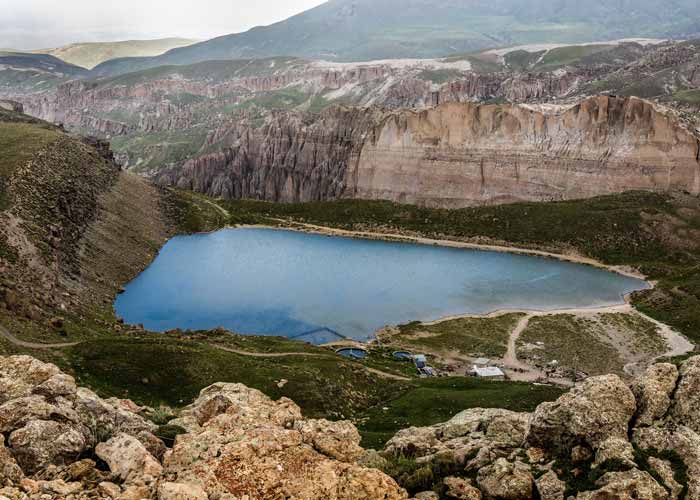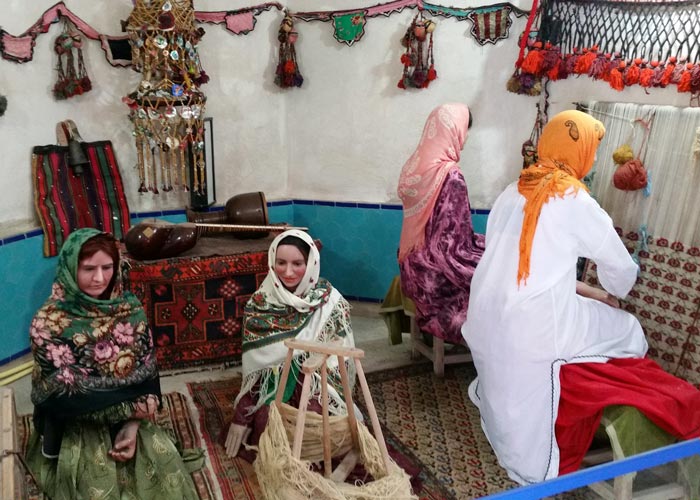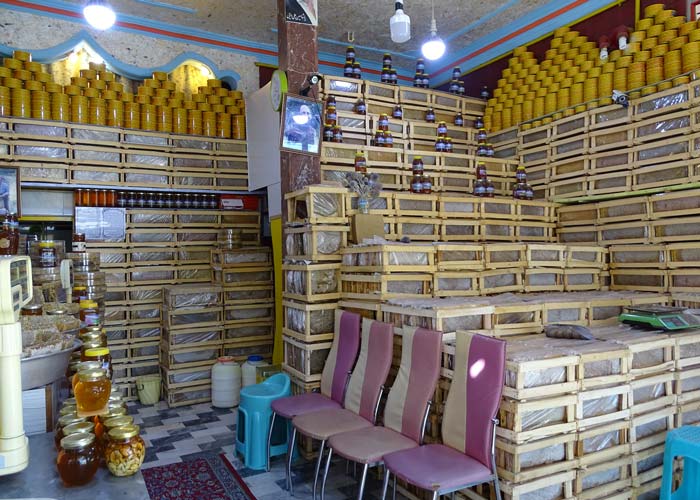Ardabil City
Ardabil City is the Capital of Ardabil Province in northeastern Azerbaijan region in Iran. What is Ardabil famous for? Its grand cultural and historical background, natural landscapes, Ardabil Rug and its therapeutic water springs. Ardabil history reached its highest status during the Safavid era (1501 – 1722) as it was the seat of Safavid Sufism and subsequently Safavid Dynasty. Ardabil is part of the Azeri cultural region of northwestern Iran, in terms of language, customs, etc. Further details such as Ardabil population, Ardabil weather and Ardabil airport are included in this post.
#1 Location and Geographical Importance of Ardabil City
Location and Geographical Importance of Ardabil City : Ardabil city is the capital of Ardabil Province, at an expanse of 3,810 km2. Located in northeastern Azerbaijan region, Ardabil is 70 km from the Caspian Sea, , and 210 km from Tabriz. Neighboring the Republic of Azerbaijan on the Caspian Sea, Ardabil has maintained paramount political and economic importance through history.
At an altitude of approx. 1,500 m, Ardabil city lies on a vast plain with Talesh Mountains on its east and the Sabalan Mountain (with Iran’s 3rd highest peak 4,811 m) on its west. Such geographical location lends the city a cold climate and diverse natural landscapes surrounding it. The Baliqly Chay River which begins from Sabalan Mount passes through the city, while boosting agricultural practice in different villages on its way.

Mausoleum of Sheikh Safi al-Din Ardabili @Eric-Bassin on Flicker
#2 Ardabil Weather and Climate
Ardabil Weather and Climate : Situated on a plain surrounded by mountains, Ardabil city counts as one of the coldest regions of Iran. Ardabil Province has a combined climate of mountainous and steppe. Very cold and snowy in winter, Ardabil is warmer during May to September. The average annual temperature is 9.5 °C in Ardabil, with August as the warmest, avg. 20.8 °C, and January the coldest, avg. -1.7 °C.
So the best time to travel to Ardabil is early June to Early September for the warm and clear weather.

Sabalan Mount
#3 Ardabil Population
Ardabil Population : According to the 2016 census, Ardabil population was 529,374 (2016 census). And along with 9 other cities, Ardabil Province had a population of 1,274,420 people.
#4 Language and Ethnicity of Ardabil City
Language and Ethnicity of Ardabil City : The dominant majority in Ardabil city are ethnic Iranian Azerbaijanis; and the primary language is Azerbaijani (Azeri) as spoken in other districts of Azerbaijan like Tabriz and Oroumiyeh, with a slight difference in accent.
Talysh and Tati are other languages spoken in some parts of Ardabil Province.

Atgoli Lake in Meshgin Shahr
#5 Ardabil Religion
Ardabil Religion : The dominant majority in Ardabil are Shi’ite Muslims, with 22% Sunni Muslims.

Mausoleum of Sheikh Safi al-Din Ardabili
#6 Ardabil History
Ardabil History : Ardabil has always maintained a exceptionally high status throughout history, for its strategic location and later as the cradle of Safavid Dynasty.
Etymologically, Ardabil is a variation of the ancient name “Artavil” meaning the “Sacred City”.
- Pre-Islam : Archaeological excavations point to settlements in Ardabil to 6th millennium BC. However, the history of Ardabil city before the Islamic era is quite obscure. Some believe that Ardabil was implied in Zoroastrian book of Avesta: as prophet Zoroaster was born by Aras River and wrote his book on Sabalan Mount. Traditional accounts point to the foundation of Ardabil during the reign of Sassanian king Peroz I (459-484 AD). During the Islamic conquest of Iran (651 AD), Ardabil was the largest city in Azerbaijan region. and remained so until the Mongol invasion.
- Mongol Invasion : For its proximity to the Caucasus, Ardabil was widely susceptible to invasions from the region. In 1209, the city was plundered by the Georgians, leaving behind a death toll of 12,000 citizens. Later again, Ardabil fell by the 3rd Mongol raid.
- Safavid Dynasty : Being the seat of the founder of Safavid Dynasty (Sheikh Safi al-Din Ardabili) in 1301 AD, Ardabil rose to paramount political and economical status during the Safavid era (1501-1722), and until modern times. Esmaeil I, the first king of Safavid, was born in Ardabil city. He was the first king of the Islamic era to nationalize Iran’s Goverment and the one to declare Shi’ism as the state religion. The Shrine and Khaneghah ofthe Sheikh Safi al-Din Ardabili in Ardabil was since a centre for Sufi religious pilgrimage and ritual until the 18th Century.
- Qajar Era : On the gradual decline of the Safavid Dynasty, Ardabil city was often rampaged by the Ottomans, so was during the Russo-Persian wars in early 19th century Qajar era. A ramification of the wars was the Treaty of Turkamanchay (1828), under which, Iran ceded the Caucasus territories to Russia, Making Ardabil even closer to the new borders and hence more economically important, being on the trade routes between Europe and Iran.
- In early 20th century Ardabil was one of the main centers of Iranian Constitutional Revolution.
#7 What Is Ardabil Famous For?
- Nature Tourism : Ardabil Province enjoys the picturesque mountain landscapes across the region, lakes and lush prairies. The region attracts thousands of tourists to delight in the cool summers. Mount Sabalan is one of the main targets of professional hikers and mountain climbers throughout the year.
- Health Tourism : Abundant mineral and hot water Springs at the foothills of the vast mountains in Ardabil, are one of the top attractions of Ardabil. The medicinal and therapeutic nature of these springs attracts visitors from around Iran and the world.
- Cultural Tourism : Home to various monuments and museums, Ardabil is most famous for the UNESCO World Heritage site Sheikh Safi al-Din Ardabili Khanegah and Shrine.
- Ardrabil Rug : Ardabil is one of the major centers of prime quality Persian rug and kilim, featuring its own signature as Ardabil Rug.

Anthropology Museum of Ardabil @François-MUNIER on Flickr
#8 Ardabil Cuisine
Ardabil Cuisine : Surrounded by lush mountains and on luscious pastures, Ardabil benefits from premium quality vegetables, seeds, herbs, dairy products, not to mention beef and lamb. Consistent with its cold climate, Ardabil cuisine consists of various highly nutrient and high-calorie meals:
- Thick Soups (Aash in Persian) and Stews : The main ingredients of Ardabili soups are flour, dairy such as butter, milk or yoghurt which is highly rich in vegetables, seeds and herbs. Aash-e Dough (traditional diluted yogurt), Aash-Shir (milk), Aash-e Yarma (rich in whole wheat), Aash-e Miveh (rich is dried nuts and vegetables and fruits) are a few of Ardabili soups.
- Dairy Products and Honey : Ardabil’s dairy and honey are also very famous as the livestock and honeybees prosper on luxuriant vegetation. Ardabil’s natural fat skim and cream and honey are among the most popular souvenirs of Ardabil city.
- Lamb and Beef Kebabs : Ardabil, and generally Azerbaijan region, is one of the best regions of Iran for its high quality lamb and beef, as the cattle feed on lush pastures. This makes Ardabil Province the perfect place to dine on premium Kebabs, especially on spa resorts of Sar’eyn, etc.

Credits to www.karnaval.ir
#9 Ardabil City Handicrafts :
Ardabil City Handicrafts : Ardabil, as other regions of Iran, has a rich variety of handicrafts, especially famous for its weave works.
- Ardabil Rug : Ardabil rug is one of the most acclaimed Persian rugs in Iran and the world. Famous for its unique design and rich colors, Ardabil rug is woven both in urban centers and among nomads of the region (such as the Shaahsavan nomads).
- Ardabil Kilim and Jaajim : Ardabil is also famous for its flat weaves
- Other Weave-works such as scarf and socks weaving, mainly in wool
- Metalwork such as Ghalamzani (Metal Engraving)
- Woodwork such as Khatam (Persian Marquetry)
- Pottery and Earthenware
Read more about Iranian Handicrafts and Souvenirs.

#10 Ardabil City Edible Souvenirs
Ardabil Edible Souvenirs : Ardabil is famous for its luscious and tasty edibles, especially its rich Honey of Mount Sabalan with different origins (depending the honeybees feed on which plants). However, below is the list of Top Ardabil edible souvenirs:
- Honey
- Butter and Cream
- Halva (dense and sweet dessert based on flour and different traditional ingredients such as Ginger)
- Pastry such as Baqlava and Qottab, Rice Cookies and Fatir Bread

@sucram-Yef on Flickr
#11 Economy of Ardabil City
Economy of Ardabil City : The economy of Ardabil city thrives mainly on agriculture and livestock farming, as well as tourism. Industrial economy of Ardabil is also growing in fields of wood fiber, steel and rubber,etc.

Ardabil Bazaar
#12 Ardabil Airport
Ardabil Airport : The Airport of Ardabil city operates domestic flights to Tehran and Mashhad, and international flights to Jeddah (Saudi Arabia) and Najaf (Iraq).
#13 How to Get to Ardabil City
How to Get to Ardabil City : Ardabil is accessible through roads from neighboring cities and flights as mentioned above.
Ardabil’s railway facility is under development and will be operational in the near future.